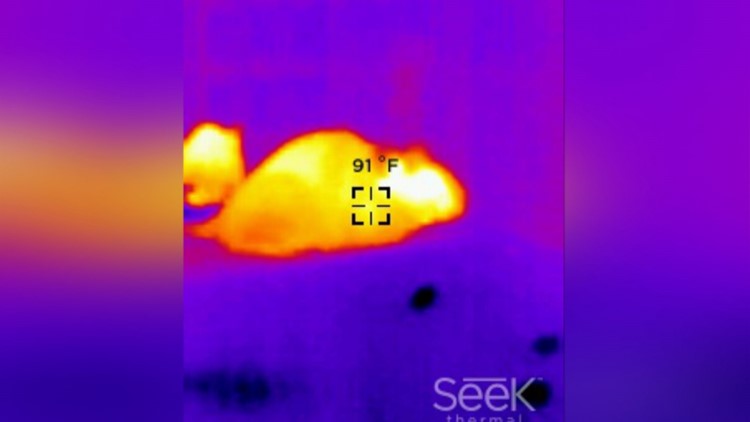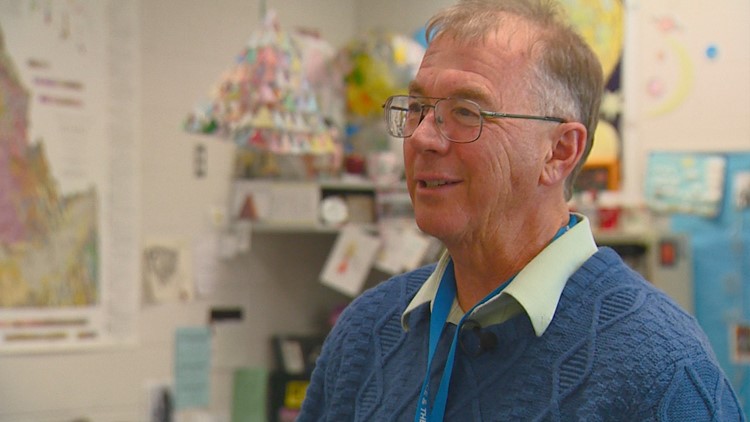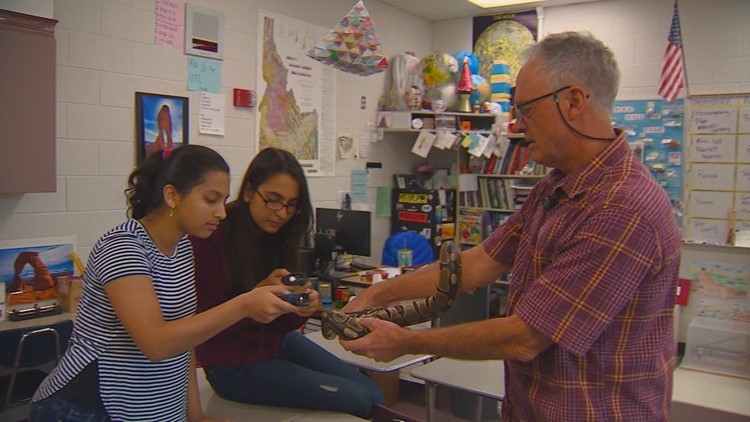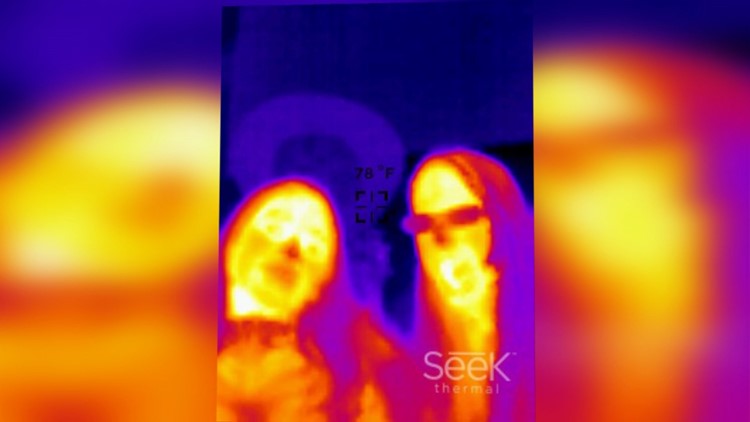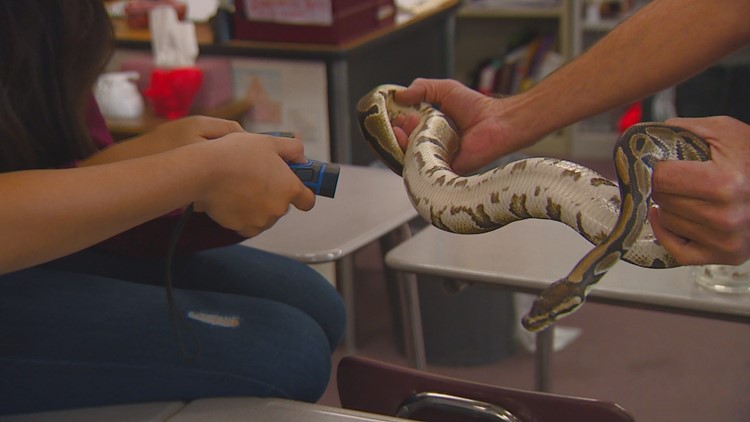BOISE — A science classroom at the Treasure Valley Math and Science Center in Boise has equipment you would expect, including beakers, a skeleton or two and the periodic table of elements. It also has pet mice, a ball python and two handheld thermal imaging units.
The thermal imagers are used for all types of experiments and lessons. Some involve the pet mice and the python.
Dr. Dave Whitacre uses them in biology lessons. On the day we were there he encouraged freshmen Alekya Tanikella and Melina Mohammadii to measure the difference in body temperature between the mice, which are warm-blooded, and the python, which is cold-blooded.
Janice Poppenga uses them in her pre-med class to show students how a muscle warms up with exercise.
And Dr. Paul Verhage, Dr. V. to his students, uses the thermal imagers in physics class. He demonstrated how the sensitive instruments can clearly show the difference between a beaker with warm water and one with cool water.
He also plans to use them in engineering classes.
"We'd like to hook them up to drones," Verhage said.
Innovative Educators at the Treasure Valley Math and Science Center
Dr. V. has his own thermal imager.
"Anything I do that I think is kind of cool I like to bring into the classroom if at all possible," Verhage said.
So he used a grant from CapEd Credit Union to buy two of them for the three teachers to share.
"We're trying to keep them (students) engaged when we have cell phones and video games and computer games and things like that at home, the internet. You gotta compete against that," Verhage said.
"I just think it's a really interesting experience," student Melina Mohammadi said of using the thermal imagers. "Like back then they didn't have these devices. They had to rely on just thermometers or just taking the temperature by your hand, but this gives you such an accurate reading."
"And it's a lot more hands-on experience," Alekya Tanikella said. "So you can learn for yourself instead of hearing it from a teacher."
Plus, Dr. V. says it's cool to collaborate with his colleagues.
"When you start saying that's a good idea, what if we take your idea plus what I was thinking and add something else to it," Verhage said. "It just really builds on itself."
But it all really boils down to the kids.
"So you've got to make the education meaningful to the students, but also kind of exciting; put a 'gee-whiz' element for instance," Verhage said.
And that's pretty cool. Or is it hot?
Either way, these three teachers are "Innovative Educators."



